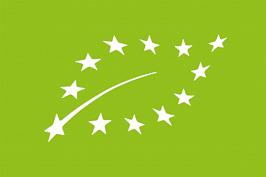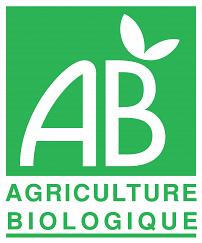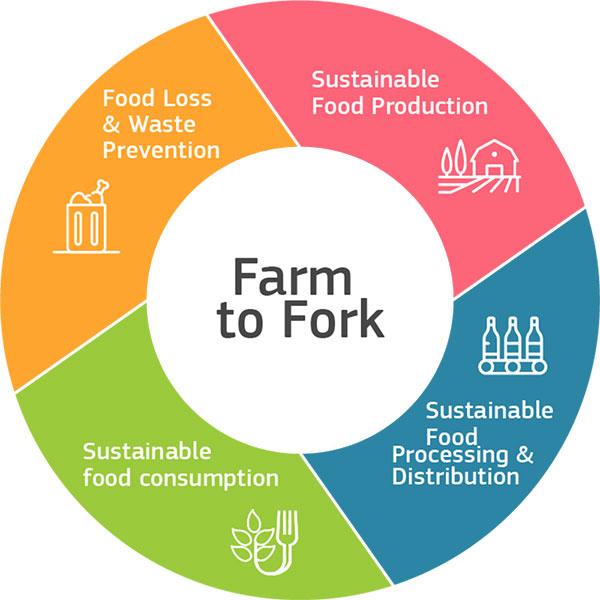 Organic food is no longer a niche market. Sales of organic food products in the European Union have more than doubled over the last decade - from €16.3 billion in 2008 to €37.4 billion in 2018 - and demand continues to grow. However, many Europeans are still unsure of what "organic" really means. Is it natural? Free of pesticides? Locally grown? Well not exactly. Here are some of the conditions food products must meet in order to be considered organic in the EU: No synthetic fertilisers Natural fertilisers, such as compost and seaweed derivatives (and animal manure), are essential to maintaining fertile and healthy soil. So organic food must be grown with these products, rather than synthetic fertilisers that are used in conventional farming, and which tend to be made of harsher chemical ingredients including nitrogen compounds, phosphorus, and potassium. "Organic farming improves soil structures and quality and enhances biodiversity. Studies have shown that organic farming present 30% more of biodiversity in the fields", explains Elena Panichi, Head of Unit at DG Agriculture and Rural Development (DG AGRI). No synthetic pesticides Farmers need to fight weeds and pests. Organic farmers are only allowed to use naturally-derived pesticides, made from plants, animals, microorganisms, or minerals. "These chemicals are of a natural origin. For instance, essential oils, plant extracts, that are listed in the relevant regulation, and are authorised, following a process that implies a scientific committee to assess the effect on the environment", says Panichi. Organic farms also have techniques such as crop rotation, or planting different crops on the same plot of land, to help to prevent soil-borne diseases. Natural predators, such as ladybugs, can also be an effective method of pest control. However, it is important to remember that just because something is “natural”, it doesn’t automatically make it harmless to either people or the environment. No GMOs (No genetically modified organisms/ingredients/crops/foods/animals) To be certified as “organic”, food cannot contain products made from genetically modified crops. This rule is the same for organic meat and other livestock products. Besides, the animals are to be raised on 100% organic feed. Antibiotics as a last resort The animals we eat, or whose products we consume, need to be kept disease-free. Many conventional farmers routinely use antibiotics for disease prevention. These can end up making their way into the food chain. Excessive antibiotics are not good for people or animals because they can help create superbugs. Antimicrobial resistance is a global concern. Every year, around 33, 000 people die in the EU, due to infections from antibiotic-resistant bacteria. On organic farms, the use of antibiotics is severely restricted. Farmers control disease by limiting the number of animals they raise and using methods such as a healthy diet for their livestock. They are only allowed to use antibiotics when absolutely necessary for an animal's health, in order to avoid suffering, and when natural remedies such as phytotherapeutic and homoeopathic medicines are not effective. "If in conventional [farming], sometimes antibiotics are given as preventive tools, in organics, antibiotics can be given as a last resort if there are no other methods to intervene. Normally, the higher animal welfare standards applied in organics already keep animals in a healthier status that prevent the use of antibiotics", explains Panichi. However, studies have shown that antibiotic use on farms is on the decline. Sales of animal antibiotics in the EU have fallen by more than 34% between 2011 and 2018. Better animal welfare Organic farmers must provide the environmental conditions necessary for animals to express their natural behaviour, such as adequate outdoor space. This is not compulsory in conventional farming. There are additional rules such as the prohibition on caging or mutilation unless absolutely necessary for health reasons. What "organic" doesn't mean locally grown. Europeans are the second largest consumers of organic in the world. Local supply can’t meet demand yet, so a large number of organic products are imported. China, Ukraine, Dominican Republic and Ecuador are the main EU trade partners for organic food imports. "Green" packaging Words like “natural”, “green” or “eco” on labels and packaging do not necessarily mean a product is organic. Healthy There's a wide range of organic product on supermarket shelves, from burgers to pizzas, from cheese to wine. The health implications of consuming excess fats, salt or sugar don't disappear just because a food product is organic. Too much fat, salt and sugar is still bad for you, whether it is organic or not. How can you be sure that the “organic” food you’re buying is actually organic? The most reliable way to know if a product is organic is if it has this official EU logo. The white leaf on a green background means that EU rules on production, processing, handling and distribution, have been followed and that the product contains at least 95% organic ingredients. This logo can only be used on products that have been certified by an authorised control agency or body. Some countries have also created their own organic logos. They are optional and complementary to the EU's leaf. This is the French one, for instance. Words like “natural”, “green” or “eco” on labels and packaging do not necessarily mean a product is organic.New rules coming in 2022 EU rules on organic production will change soon. In 2022, Europe will have legislation with stricter controls. Panichi believes it will bring a "substantial improvement" to the organic sector. "We have to bear in mind that the new organic legislation is not a revolution, but it's an evolution of the organic legislation that started in the past years and has been kept evolving together with the sector". The new legislation will harmonise rules for non-EU and EU producers. It will also simplify procedures for small farms in order to attract new producers, thanks to a new system of group validation. The list of organic foods is expected to grow, with the addition of products such as salt and cork. The possibility of certifying insects as organic is also expected in the rules. What is the future of organics? "Surfaces in Europe are increasing or as well as all over the world, and they are increasing at a fast pace," says Panichi. As part of its Farm To Fork strategy, the EU has committed to increasing organic production, with the goal of 25% of all agricultural land being used for organic farming by 2030. In 2019, it was only around 8%. By 2030, Europe also aims to reduce the use of harmful chemicals and hazardous pesticides by 50%. Buying organic food is still too expensive for many. One of Farm To Fork's main goals is to make healthy, sustainable food more accessible and affordable to all Europeans. A French from 2019 shows that a basket of eight organic fruits and eight organic vegetables is, on average, twice as expensive as a basket of non-organic products. Source: Euronews Pictures: Source for Organic Leaf picture is Euronews and European Commission is for Farm to Fork picture Qu'est-ce qui rend les aliments biologiques « bio »?
Extrait d'article en Français - Pour être certifiés « biologiques », les aliments ne peuvent pas contenir de produits issus de cultures génétiquement modifiées. - Pas de pesticides de synthèse. - L'agriculture biologique améliore la structure et la qualité des sols et renforce la biodiversité. - Des mots comme « naturel », « vert » ou « éco » sur les étiquettes et les emballages ne signifient pas nécessairement qu'un produit est biologique. Comments are closed.
|
Archives
January 2023
Categories
All
|


 RSS Feed
RSS Feed
